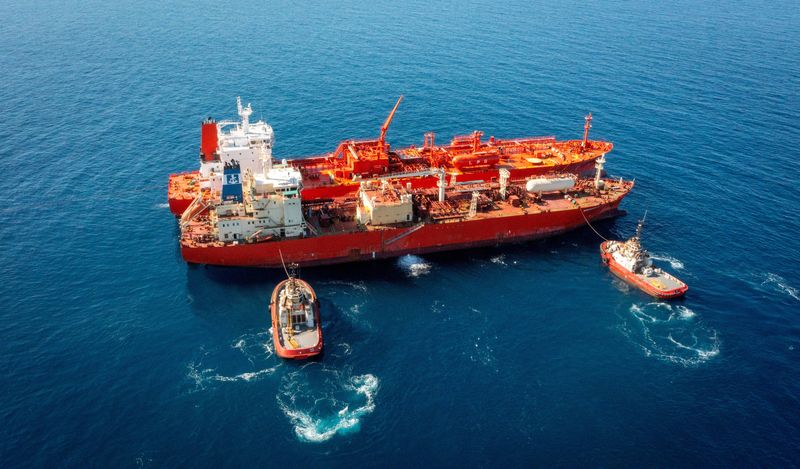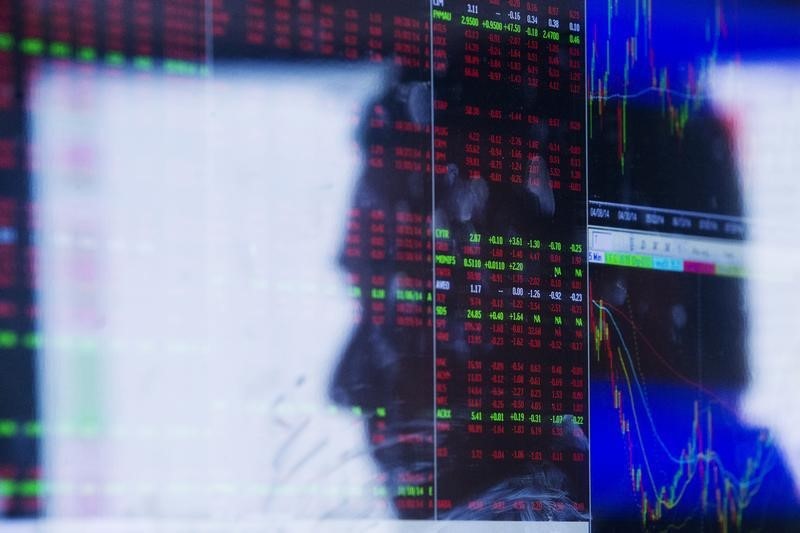By Jeslyn Lerh
SINGAPORE (Reuters) – At one of the world’s largest bulk export ports in Western Australia, shippers last month safely completed the first transfer of ammonia from one ship to another, a key test of its acceptance as a marine fuel in the drive for cleaner energy .
The first freighters powered by ammonia are expected to enter service in 2026, one of many alternatives the industry is turning to to reduce the carbon footprint responsible for nearly 3% of global emissions.
But ammonia as a marine fuel faces major cost and safety hurdles compared to other fuels such as liquefied (LNG), methanol and biofuels.
The appeal of ammonia is that it is carbon-free and would be a zero-emissions fuel if it were made from hydrogen produced with renewable electricity.
But safety is a major challenge for the product typically used for fertilizers and explosives.
“Currently, the lack of regulation, experience in the use and toxicity of ammonia on board ships pose major safety concerns,” said Laure Baratgin, head of commercial operations at mining giant Rio Tinto (NYSE:).
The largest global iron ore producer Rio is the largest exporter in Dampier, where the ammonia transfer trial was carried out. It operates dual-fuel bulk carriers running on traditional marine fuel or LNG, but has yet to charter or order ammonia-fueled ships.
“Pending our confidence and that of our partners, industry and communities that risks are sufficiently controlled, we will seek to charter ammonia dual-fuel vessels, the specific timing of which remains uncertain,” she told Reuters.
Other shippers are also hesitant. Globally, only 25 ammonia dual-fuel ships have been ordered in 2024, followed by a fleet of at least 722 LNG-powered ships and 62 methanol-powered ships in the same year, including orders and ships already in service.
There are currently only two smaller ammonia-fueled ships in service, including a tugboat in Japan.
HAZARDOUS PROPERTIES
Refueling ships or bunkering poses special challenges when it comes to ammonia, which can cause acute poisoning and damage to the skin, eyes and respiratory tract.
“The biggest risk is leakage during bunkering operations,” in addition to leakage from fuel tanks, said Yoshikazu Urushitani, general manager of the marine fuel division at Mitsui OSK Lines, which is designing an ammonia-powered bulk carrier.
A study by the Global Center for Maritime Decarbonisation (GCMD) has identified 400 risks associated with ammonia bunkering. According to the report, these risks can be mitigated with measures such as emergency disconnects to shut down systems when a leak is detected.
The organization develops a detailed emergency plan for ammonia leaks, which are more difficult to control than oil leaks.
“You see it for oil: it stays there and disperses in the water. But ammonia disappears into the air,” says Lynn Loo, CEO of GCMD.
Japan’s Nippon Yusen Kaisha (NYK), which has agreed to build the world’s first medium ammonia-based gas tanker, has developed equipment specifically for ammonia bunkering.
The industry will need to establish guidelines for seafarers to manage the fuel safely, said Takahiro Rokuroda, managing director of NYK’s Next Generation Fuel Business Group.
Singapore, the world’s largest marine fueling station, has shortlisted companies to explore the viability of ammonia for power generation and bunkering and is developing ammonia bunkering standards.
PROHIBITED CHARGES
To make ammonia competitive in bunkering, costs will have to drop sharply.
Powering ships with ammonia can be two to four times more expensive than conventional fuels, industry figures show, due to limited supply for the maritime sector and an energy density around two and a half times lower than traditional fuels .
“If you want to travel the same distance, you either have to carry about two and a half times as much fuel, or bunker more often so that you have enough fuel to make that journey,” says Loo. .
Ammonia engines also require extra maintenance because the fuel is corrosive, says engine manufacturer Wartsila.

Yet the American Bureau of Shipping predicts that ammonia will account for about a third of bunker fuel by 2050.
“We certainly will not bring any product to market until we are 100% confident that all risks have been properly managed,” said Kenny MacLean, COO at bunker fuel supplier Peninsula.


